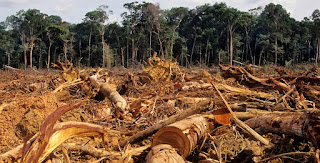UK’s cybersecurity agency took down more scams during the pandemic than in the previous three years combined. Fraudulent online campaigns grew 15 times. Experts found 43 fake NHS covid-19 apps hosted outside the official app stores. In the USA, Federal Bureau of Investigation said complaints rose by 69%, reaching a record 791,790.
*****
Phishing was a term coined in 1996 by hackers using email
lures, setting out hooks to “fish” for passwords and financial data from the “sea”
of internet users. Twenty five years later, the lexicon is richer.
Spear phishing is custom-made messaging or emails. The scamster will
take data from your social media account, and send you a personalized phishing
message. Smishing is phishing done
through SMS.
David Robson, the author of the intelligence trap: why smart people make dumb mistakes, in a
BBC article calls the global wave of scam attacks a “scamdemic”.
*****
Smartphones have made the job of fraudsters easier. On
the small screens, details are rarely scrutinized. While emails may sit in our
laptops for days, we tend to read and respond quickly to phone messages. The
smartphone users are multi-tasking, watching a film, chatting with friends,
forwarding Whatsapp pictures, switching between apps. Some people read and respond
to messages while driving, endangering their life expectancy.
One research monitored fifty smartphone users, and
found they switched apps an average of 101 times a day, though they looked at
the screen for 2 hours 30 minutes. With such lack of focus, a smartphone user is
prone to become a phishing victim.
We instinctively feel it is easier to dupe elderly
people. But their use of technology is limited, and they are more suspicious.
The young, on the other hand, have no fear. Without thinking, they can quickly
open links, order online, fill forms, and give information they shouldn’t.
Smartphones put the millennials and generation Z at a higher risk.
*****
Pandemic filled people with anxiety and stress, making
them more vulnerable. In the lockdowns, we became more reliant on online
communication and smartphones. Psychologists talk of a Pavlovian behavioral loop. Every sound of a new notification lifts
our mood a little. It triggers a desire to read and respond.
Security experts advise us to not respond to any message immediately. Wait. Ask yourself: Is this
real? Don’t automatically click on links. (The way we accept “terms and
conditions” without reading them). Clicking on links may put your personal data
in the hands of a cyberscammer. If you don’t know the sender, or trust the
link, it is better to manually type out the address. That way, you can spot
anomalies in the URL.
*****
The list of coronavirus scams is long.
On Facebook, some people proudly post their vaccination
photos as well as the vaccination card. Scammers can steal your name, birth-date
and other information to easily impersonate you. Don’t ever post your vaccination
certificate on social media.
There have been covid-19 testing, vaccine, and
treatment scams. Since vaccine is a scarce item in many countries, you may be
offered early access to it. All you need to do is to fill a form giving your
details. Don’t.
Fake charities have mushroomed. Your screen will show crying
children, distressed widows, dying patients. The pictures move our hearts, but
they are often from crooks. Scamsters are also using real charities to
perpetrate their attacks.
If you think human beings can’t be viler, let me tell
you about funeral assistance scams. Scammers call family members of people who
have just died. (Probably steal the information from the hospital). They claim
to be from the government’s funeral assistance programme. In USA, many such “funeral
directors” have stolen family members’ social security numbers.
Those working from home have been cyberattacked not
for their own money, but to attack the employer. BEC (Business email
compromise) attacks involve a hacker gaining control of legitimate email
accounts to steal company funds.
*****
During the pandemic, and after it, it is a good practice
to assume nobody is immune to phishing attacks. Never give your personal and
banking details. Slow down your response speed on smartphones. Don’t open
untrusted links.
The coronavirus pandemic will get over, but the
scamdemic will continue.
Ravi









